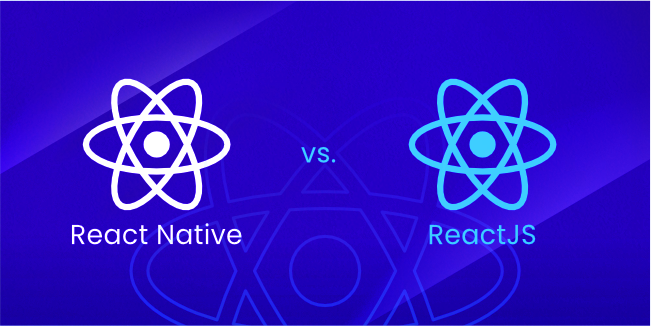Mobile Development
Technologies
development
mobileapp
crossplatform
reactnative
appdevelopment
What is React Native? What is it For?

React Native has been an essential topic in the world of mobile development for several years. Unsurprisingly, it quickly took the tech world by storm, providing developers a way to build apps for iOS and Android simultaneously.
React Native has been embraced by hundreds of companies worldwide, including Uber, Microsoft, and Facebook, and it's used in various industries.
However, before you commit fully to React Native, you must understand how it works and whether it's the best solution for your project.
What are the most significant benefits and drawbacks of using React Native? What sets it apart from other cross-development platforms? And last but not least, what should your code writers know before they start working with React Native?
We'll answer these and other questions in the next piece so you can make an educated selection and see whether React Native is suitable for your company.
What is React Native?
React Native is a JavaScript-based mobile app framework that enables you to create natively rendered iOS and Android apps. The framework allows you to write an app using the same codebase for multiple platforms.
Facebook released React Native as an open-source project in 2015. In only a few years, it has become one of the most popular methods for native app development. Instagram, Facebook, and Skype are just a few of the hundreds of mobile apps that employ React Native development.
React Native's worldwide success is due to a variety of factors. React Native allows businesses to develop code just once and use it to power both iOS and Android apps, resulting in significant time and resource savings.
React Native was also created on the back of React, a JavaScript library that was already quite popular when the mobile platform debuted. Furthermore, by allowing frontend developers to work with previously inaccessible web-based technologies, the framework allowed them to create robust, production-ready applications for mobile devices.
React vs. React Native

React Native isn't a new version of React, even though it does make use of it. React (often known as ReactJS) is a JavaScript framework for building website frontends. Facebook's engineering team created it in much the same way as React Native was.
Meanwhile, React Native enables developers to quickly build and publish iOS and Android applications using a set of UI components developed with React.
React and React Native use a combination of JavaScript and JSX, a special markup language. The syntax used to render components in JSX components, on the other hand, differs between React and React Native. In addition, while React uses HTML and CSS, React Native enables you to utilize native mobile user interface components.
But more about the differences between React and React Native in our article specifically on this topic. There, we discuss in depth the biggest differences and what is better for what. You should check it out.
React Native and Cross-platform Development
Cross-platform development entails creating software that works on a variety of hardware platforms. A cross-platform program may run on Microsoft Windows, Linux, and macOS, or just two of them. An excellent example of a cross-platform application is Adobe Flash, which performs the same regardless of the computer or mobile device you use to execute it.
Cross-platform is the holy Grail of software development, in which you may write your code once and then deploy it to any platform rather than developing for a particular one. Developers with experience in languages like JavaScript or C# can create platforms without prior knowledge. It's also appealing to businesses since product development time, and expenses are reduced by half. Is it even worth the effort to try to make something cross-platform? Here's why the answer is yes.
More Users
You decided to cross-platform mobile app development, so you don't have to pick between iOS or Android consumers since it works on both platforms, giving you access to a bigger audience.
Code Recycling
It is one of the essential benefits of cross-platform development - you may create only one codebase for both Android and iOS at the same time. Native build apps require the employment of two distinct programming professionals, one for iOS and one for Android, which is time-consuming.
Faster Development
Since only one codebase is required to manage iOS and Android, and everything is in one location, product development may be considerably faster. Even though they work on different devices, cross-platform apps are created as single projects, and a large amount of code can be reused across platforms.
Costs Saving
The ability to reuse code and faster development directly affect the cost making cross-platform applications 30% less expensive to build than native apps.
You may believe that cross-platform development is perfect – it isn't, and it has several drawbacks. Let's get started on addressing these issues right now.
You Need Experts
Cross-platform apps are not any less efficient than their native counterparts. For example, Flutter and React Native want to run 60 frames per second. In most situations, cross-platform applications can perform to the same standard as native apps if the developers have sufficient skill and experience.
Harder Code Design
Because cross-platform applications must be responsive to various devices and platforms, the process is more difficult. It adds even more work for developers, who must account for the differences by adding exemptions for various devices and platforms.
Longer Release Time
It takes a long time to update both apps when new Android or iOS features are introduced. Native applications are updated more quickly.
How does React Native Work?

Let's go over the processes involved in developing for multiple platforms and how React Native differs from anything we've seen before.
React Native is written using a mix of JavaScript and JXL, which is a special markup language similar to XML. The framework can communicate with both realms: JavaScript-based threads and actual, native app threads.
How does this communication work? React Native makes use of a "bridge" to enable cross-platform communication. While JavaScript and Native threads are written in separate languages, the bridge feature allows bidirectional communication.
The distinction between React Native and other cross-platform development technologies is that it doesn't render WebViews in its code. It uses native views and components instead of fake ones in different methods. It is one of the reasons for React Native's tremendous popularity.
React Native Pros
Let's look at the benefits of React Native development and why you should make it your mobile app development platform.
Cross-platform Development
The most significant benefit of React Native is that it allows you to reuse code, indicating that apps may function on various platforms.
Another excellent piece of information is that if the websites are built with React Native, you may utilize the web application code to create mobile apps.
It also reduces development time because it includes pre-compiled React Native components, which are part of the open-source collection. React Native is a viable answer for all consumer-facing native mobile developers since it delivers excellent performance, and in most situations (particularly when compared to developing two separate native apps with the same service or product), it is (in most cases) both simpler and less expensive.
React Native Community
React Native is a free, open-source JavaScript platform that allows developers to contribute their expertise to the framework's development.
If a developer runs into difficulties while building a React Native app, they may seek assistance from the community. There will always be someone who can assist them in resolving their challenges, positively influencing coding abilities.
Cost Efficiency
Another benefit of React Native development is greater cost-effectiveness. It is because developers can utilize the same code to build applications for both iPhone and Android.
It also means you don't have to bring two iOS and Android development teams on board. A small team will be enough. The cost of creating apps in React Native is significantly lower than those created using languages that aren't cross-platform compatible.
Easy to Use UI
React Native is a framework designed to create applications that are faster, more responsive, and easier to use than standard native mobile apps. The app's interface is built using React JavaScript, making it more responsive and quicker while reducing the load time, resulting in a better user experience overall. Because of the reactive UI and component-based methodologies, the framework is ideal for developing apps with both simple and complex designs.
React Native Cons
Before building a React Native mobile app, here are the potential drawbacks.
Scalability
React Native will generally function well for you even if your app becomes a sophisticated, complicated solution in the future.
After all, Facebook has had a lot of success with it, and they've been using it for years. On the other hand, some businesses have decided to abandon React Native.
Compatibility Issues
React Native is an open-source framework for developing native apps for Android and iOS. It's still in beta, so you'll have to deal with bugs and other issues.
It might slow down your project if you don't have React Native developers or React Native team. They'll spend time on lengthy troubleshooting if they aren't familiar with it.
Some Missing Custom Modules
There have been significant improvements to React Native since its release, but it still has some room for improvement. As a result, you may need to maintain three distinct codebases rather than just one.
However, this is not a typical problem. Unless you're developing your app from the ground up or attempting to break into an existing one, you won't run into any issues like this native code.
What's Built With React Native? Here are The Examples
Now that you know what React Native is and how it works, it's time to look at the applications created with it. Here are our favorite React Native apps.
Facebook and Facebook Ads Manager App

Facebook is one of the most popular React Native apps, and it's no surprise we're beginning with it since it was responsible for creating the language and is a major driving force behind its growth.
React Native was born when Facebook set out to give mobile web development benefits, such as rapid iteration and a single product development team. It was used to create Facebook's own Ads Manager for iOS and Android – the same dev team developed both.
Instagram

Instagram decided to include React Native into its existing native app, starting with the Push notification view, which began as a WebView. Fortunately, it was not necessary to construct the navigation infrastructure because the interface was simple enough to do without one. Product teams could enhance developer velocity by 85-99 percent using React Native.
UberEats

Another React Native-based app is UberEats, which has three participants instead of just two, in contrast to the Uber app, which features only two.
Because the data was so granular, it necessitated developing a bespoke dashboard that also factored in restaurants. The web-specific dashboard originally constructed limited the ability to deliver critical information to food businesses.
These limitations had a detrimental impact on the user experience since they restricted the device's full capabilities and access to native device functionalities such as sound notifications.
One Last Word at The End
React Native is an excellent tool for building apps that work properly across various platforms and systems. It's a framework that businesses and developers alike enjoy. It saves time, results in a faster development cycle, and is cost-effective.
It allows you to reach a larger audience at once: because one app may be used by both Android and iOS users, the launch can be coordinated, and firms with less money for development don't have to pick a single platform.
React Native is a wonderful choice if your project doesn't need a complicated user interface, access to native capabilities (e.g., media players), or the ability to work across platforms. React Native is also an excellent alternative if you have little money to invest.